Excerpts from Jim Conrad's
Naturalist Newsletter
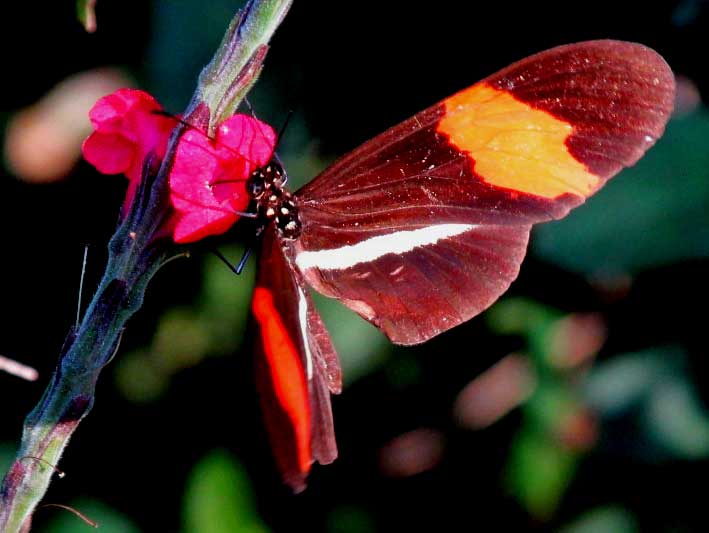
from the January 10, 2016 Newsletter issued from Hacienda Chichen Resort beside Chichén Itzá Ruins, central Yucatán, MÉXICO
RED VERVAIN
One of the prettiest butterflies we have, the Crimson-patched Longwing, a kind of Heliconid butterfly with exceptionally narrow but long wings, is showing up nowadays, and when they appear you just have to pause and watch how gracefully and delicately they flutter through the air. This week a couple was coming and going around a spot along the trail so I approached slowly, to see what attracted them. Above, you can see what they were after.
Seeing the butterflies was great, but more interesting was the plant attracting them. I'd never noticed this species. The trail led through a particularly undisturbed, shadowy patch of forest, so maybe most places around here are just too open and weedy for it. Below, you can see a flash-assisted picture of the yard tall (meter) semi-woody herb:
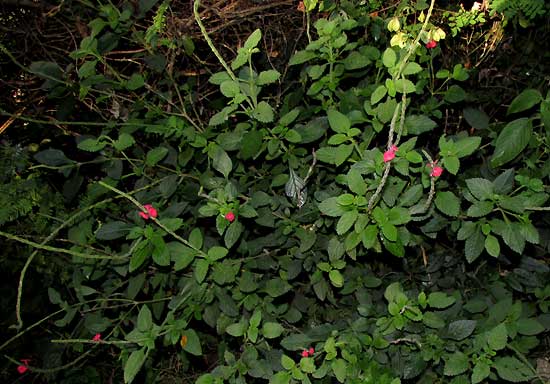
Up close you see that the flowers are bilaterally symmetrical, that their styles extend beyond the throats, that each flower is subtended by a bract, and that the flowers emerge from a shallow depression in the spike's stem, or rachis, as shown below:
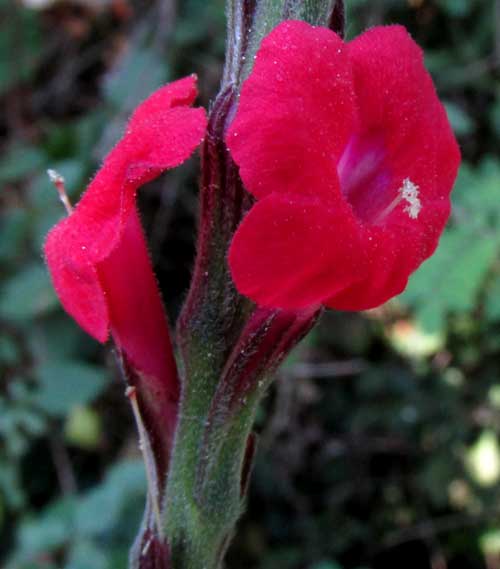
Unseen in that picture are two stamens inside the tube. On the spike above the open flowers there are younger, unopened blossoms, while below the open flowers the ovaries of older flowers develop into fruits. In this species the maturing fruits are well protected by their subtending bracts, and by their being mostly sunken into the spike's rachis, as shown below:
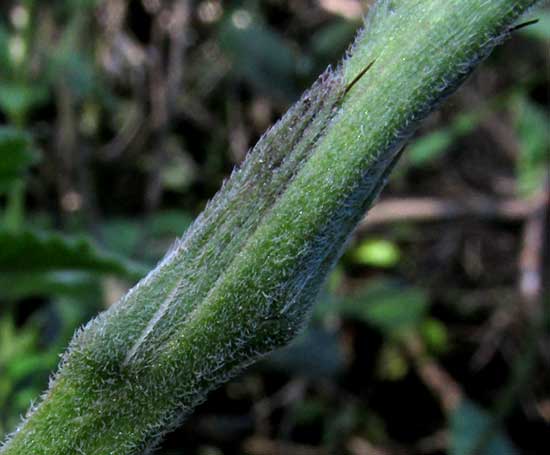
The plant's saw-toothed-margined leaves arose two per stem node, opposite one another, as shown below:
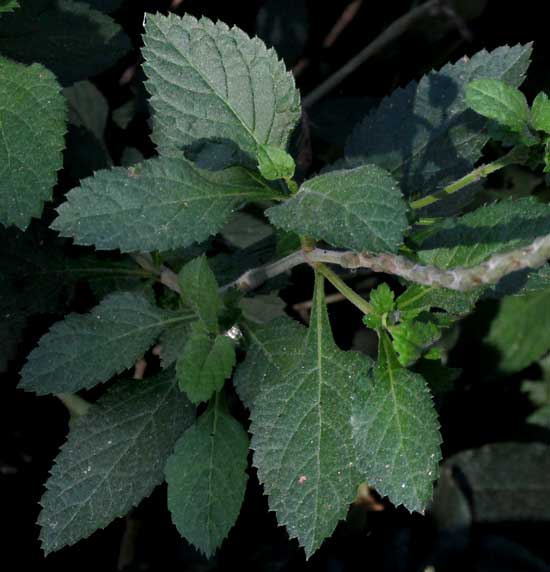
Plants with opposite leaves bearing toothed margins like this immediately remind us of species in the Mint and Verbena Families. The terminal spikes bearing flowers in this fashion take us to the Verbena Family, the Verbenaceae. In fact, it could be a member of the genus Verbena itself, except for the way the flowers and fruits are sunken into the rachises, and the fact that the blossoms bear two stamens, not four. These two items throw our plant into the less well known genus Stachytarpheta, whose species often are known as verbenas, or vervains, even though they're not in the genus Verbena.
Our pretty wildflower is STACHYTARPHETA MINIACEA, and although it's endemic just to the Yucatan Peninsula, Belize and northern Guatemala, it has English names, because Northern gardeners have discovered it. It's planted not only for its beauty, but because it's such a magnet for butterflies. Species of Stachytarpheta often are called porterweeds, but this species generally is known as the Red Vervain.
The 2015 book Messages from the Gods: A Guide to the Useful Plants of Belize," by Michael Balick and Rosita Arvigo, tells us that three roots from three different Red Vervain plants should be boiled in a gallon of water for ten minutes to make a tea for treating measles, itching, sores, and to prevent scarring from measles. The cooled liquid should be poured cool over the body, and left to air dry.
Seven species of Stachytarpheta are listed for the Yucatan, but only one produces red flowers, and that's our endemic Red Vervain.